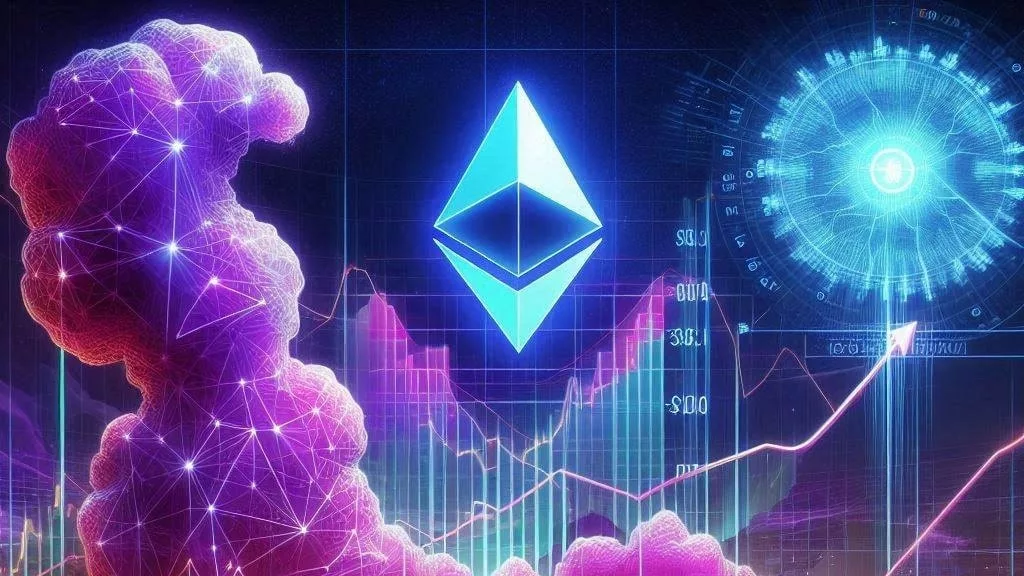
Ethereum (ETH), the second-largest cryptocurrency by market capitalization, has experienced a notable surge in its supply, raising concerns about the long-term implications for the token’s value. Over the past week, Ethereum’s net supply increased by over 10,000 ETH, signaling a potential challenge to the supply control mechanisms introduced in the network’s recent upgrades. This article explores the factors behind this supply increase, the role of Ethereum’s token burn mechanism, and the current market conditions affecting ETH’s price.
According to data from ultrasound money, Ethereum’s net supply increased by 10,201 ETH in just the past seven days. During this period, a total of 18,415 ETH was newly supplied to the network, while 8,213 ETH were burned and removed from circulation through Ethereum’s token burn mechanism. Despite this mechanism, which was designed to reduce the overall supply, the network has continued to see net growth in ETH tokens.
This recent increase in supply brings Ethereum’s total supply to 120.37 million ETH, with the annual growth rate now sitting at 0.442%. Although this rate reflects a more controlled expansion compared to pre-upgrade levels, it suggests that Ethereum’s supply is still expanding despite the burn mechanism. Understanding the significance of these figures is crucial for investors and market analysts who are closely monitoring the impact of Ethereum’s supply dynamics on its price trajectory.
The EIP-1559 token burn mechanism, implemented after the London upgrade in August 2021, was introduced to help control Ethereum’s supply and, ultimately, to support its long-term value. The mechanism burns a portion of the transaction fees that users pay when sending or interacting with Ethereum-based assets. This process removes ETH from circulation, reducing the overall supply and aiming to create a deflationary pressure on the token.
However, the recent increase in Ethereum’s supply highlights the fact that the burn mechanism alone is not enough to offset the creation of new ETH through block rewards given to miners and validators. The balance between ETH burned and ETH newly minted will continue to be a determining factor in Ethereum’s supply growth and its effect on market prices.
As of the most recent data, Ethereum is currently trading at $2,425, reflecting a 2.52% decrease over the last 24 hours. This price drop comes in the wake of a larger market decline, primarily driven by Bitcoin’s (BTC) recent downward trend. Bitcoin, which currently trades around $62,513, continues to exert considerable influence on the broader cryptocurrency market, including Ethereum. When Bitcoin’s price faces downward pressure, altcoins like Ethereum often follow suit.
Ethereum’s price in the last 24 hours has fluctuated between a high of $2,520 and a low of $2,405, reflecting the volatility that has become characteristic of the crypto market. Investors are now grappling with both the expanding supply and the impact of Bitcoin’s performance, which creates a complex market environment for ETH.
The recent supply increase can be attributed to several factors, including heightened network activity and the ongoing issuance of new Ethereum tokens. Each time a new block is created on the Ethereum blockchain, miners or validators are rewarded with ETH, adding to the total circulating supply. While the burn mechanism helps to remove some of these tokens from circulation, the current rate of burning is not yet sufficient to reverse or halt supply growth entirely.
Moreover, the increased use of Ethereum-based decentralized applications (d Apps), De Fi platforms, and non-fungible tokens (NFTs) has led to a rise in transaction volume on the network, further contributing to the issuance of new ETH. The token burn mechanism is actively working to reduce this volume, but as network usage grows, so does the complexity of controlling the overall supply.
Despite the recent increase in supply, Ethereum’s development team and broader community remain optimistic about the long-term impact of the token burn mechanism and other upgrades planned for the network. Ethereum’s upcoming shift from a proof-of-work (Pow) consensus mechanism to a proof-of-stake (Pos) model, known as Ethereum 2.0, is expected to bring about significant changes in how new ETH is created and how supply is controlled.
Under the Pos model, Ethereum’s issuance rate is projected to decrease, as validators (who secure the network under Pos) are typically rewarded with fewer tokens compared to miners in the current Pow system. This shift could lead to a more controlled supply of Ethereum, helping to reduce inflationary pressures and potentially stabilizing or even decreasing the overall supply of ETH over time.
For Ethereum investors, the recent increase in supply presents both risks and opportunities. On one hand, an expanding supply could dilute the value of existing ETH tokens, especially if the burn mechanism is unable to keep pace with new issuance. This could lead to short-term price fluctuations and increased volatility in the market.
On the other hand, Ethereum’s growing role in the broader cryptocurrency ecosystem, particularly within the realms of De Fi and NFTs, suggests that demand for the token will likely remain strong. If Ethereum continues to see widespread adoption and usage, the long-term demand could outstrip supply growth, leading to upward price pressure despite short-term fluctuations.
Investors should closely monitor Ethereum’s supply dynamics and market trends, as well as the upcoming Ethereum 2.0 upgrade, which could play a pivotal role in shaping the future of the network. In the meantime, the token burn mechanism remains a key factor in Ethereum’s ongoing supply control efforts, even as the market experiences growing pains.
The recent increase in Ethereum’s supply may raise questions about the long-term effectiveness of its token burn mechanism, but the larger picture remains one of innovation and potential. As Ethereum continues to evolve, particularly with the anticipated Ethereum 2.0 upgrade, investors will need to stay informed about the network’s supply and demand dynamics. While challenges remain, Ethereum’s status as a cornerstone of the crypto world suggests that its future remains bright, with opportunities for growth and further adoption.



Get the latest Crypto & Blockchain News in your inbox.